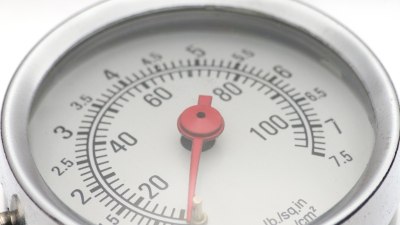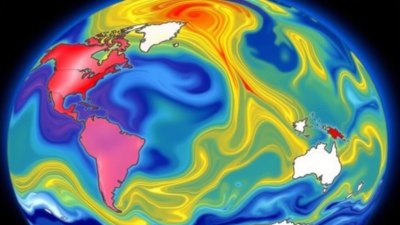The Emotional Journey of Trying to Work Out in “Feels Like” Temperatures
Explore the emotional challenges and triumphs of exercising in extreme temperatures.

Image by prostock-studio on Freepik
When it comes to working out, many individuals face a significant obstacle that often goes unnoticed: the emotional journey of exercising in different weather conditions, particularly in extreme ‘feels like’ temperatures. These impactful sensations, derived from a combination of humidity, wind chill, and temperature, can turn a simple workout into an emotional roller coaster. Understanding this emotional journey is crucial as it influences not only our motivation but also our physical health and overall well-being.
The Science Behind “Feels Like” Temperatures
To understand the emotional weight of exercising in extreme temperatures, we need to grasp the science behind 'feels like' measurements. These calculations consider not only the air temperature but also relative humidity and wind speed, creating a more accurate representation of how the temperature truly feels to our bodies. For instance, on a humid day, the air feels warmer than it actually is, leading to discomfort during workouts. Conversely, a cold day with biting winds can make the temperature feel significantly lower, creating safety and emotional challenges for outdoor enthusiasts.
The Initial Motivation
Initially, the motivation to work out in varying temperatures can frequently be fueled by a desire to maintain health, achieve fitness goals, or escape the mundane routine. However, this motivation is often put to the test when confronted with extreme conditions. On a sweltering summer day, when the heat index climbs to oppressive levels, the urge to stay indoors may overshadow even the most determined fitness plans. Alternatively, frigid winter days can bring about a sense of reluctance to step outside the cozy confines of home. The initial excitement can quickly morph into mental battles of will and self-compassion, creating a unique emotional journey.
From Excitement to Anxiety
As an individual prepares to work out in challenging conditions, feelings of excitement often transform into rising anxiety. This transition can stem from various concerns, such as the fear of heat exhaustion or frostbite. When it's over 90 degrees Fahrenheit with high humidity, feelings of dread can creep in, overshadowing the excitement of a good workout. On the other hand, when temperatures plummet and strong winds howl, the worry about slipping or feeling numb can also provoke anxiety. Understanding these emotional responses is vital; they shape our decisions and can lead us to either prioritize safety or push through adversity.
Physical Discomfort Amplifies Emotional Responses
Once the workout begins, the physical discomfort brought on by extreme weather can intensify emotional responses. When humidity levels soar, the body must work harder to regulate its temperature, leading to sweat-soaked clothing and a sticky feeling. This sensation can quickly turn an eager jog into an exercise in frustration, triggering feelings of anger or hopelessness. Likewise, during brisk winter workouts, the cold can inhibit circulation, causing painful sensations that may make exercise feel torturous instead of invigorating. These physical and emotional experiences often intertwine, creating a challenging environment that tests resilience and determination.
The Role of Support Systems
As individuals navigate the emotional challenges of exercising in extreme ‘feels like’ conditions, the role of support systems cannot be overstated. Whether it’s friends, family, or fitness communities, emotional support can serve as a critical lifeline. The encouragement from others can help combat negative emotions and reinforce a sense of solidarity in shared challenges. For instance, a running partner can motivate one to tackle that extra mile despite the sweltering heat or biting cold, helping to fortify emotional resilience. Through this shared experience, individuals can feel less isolated and more connected, transforming their emotional responses into positive energy.
Finding Joy in the Journey
Amidst the struggles that extreme temperatures bring, finding joy in the journey of exercising is essential. It can be therapeutic to reframe one's perspective and embrace the unique challenges presented by different weather conditions. Hot summer runs can be infused with moments of gratitude for the sunshine, while snowy escapades can evoke a childlike wonder at glistening landscapes. Accepting and celebrating these emotional fluctuations can transform the experience from a daunting task into an adventure worth undertaking. Acknowledging feelings of discomfort and joy alike serves to create a more profound connection to the activity and enhances overall well-being.
Strategies for Emotional Resilience
There are practical strategies that can help individuals build emotional resilience when faced with extreme ‘feels like’ temperatures. Firstly, understanding one’s physical limits is fundamental. Setting realistic goals based on prevailing weather conditions can foster a sense of accomplishment rather than frustration. Secondly, cultivating a flexible workout routine that includes indoor alternatives can provide a necessary escape without sacrificing commitment to fitness. Engaging in mindfulness practices and focusing on breathing techniques can also help manage anxiety and keep emotions balanced during challenging workouts. Additionally, celebrating small victories, whether that means completing a workout or simply showing up despite the weather, reinforces positive emotional responses.
Setting Goals and Tracking Progress
Ultimately, establishing personal workout goals related to weather resilience can serve as a motivator. Tracking progress, whether through personal journals or fitness apps, can provide tangible evidence of growth and success. By reflecting on workouts completed in extreme conditions, individuals can enhance their emotional narrative associated with fitness. As one progresses through diverse experiences, they can reclaim their positive emotions and create a sense of mastery over the elements and their own responses.
The Emotional Impact of Accomplishment
The rooted emotional fulfillment that accompanies accomplishing workouts under punishing conditions can prove transformative. Each completed run on a sweltering day or every mile trekked during icy conditions reinforces a sense of pride and achievement that transcends the act of exercise itself. This emotional payout can generate momentum, inspiring individuals to conquer their goals continuously. However, it also invites reflection on one's capabilities, highlighting personal strength and perseverance. The emotional landscape is forever altered, leading to a more positive relationship with fitness.
Embracing the Journey
In conclusion, the emotional journey of trying to work out in “feels like” temperatures is a multifaceted experience that involves navigating excitement, anxiety, physical discomfort, and ultimately accomplishment. By understanding the dynamics of weather on our emotions, we can equip ourselves with strategies to foster resilience. The role of support systems further enriches this experience, highlighting the need for community in overcoming obstacles. Moreover, every workout completed amid challenging conditions forges a deeper connection to our physical selves and our capabilities. Embracing this journey empowers individuals to transform the trials of exercising into meaningful engagements that promote joy, growth, and fulfillment.











